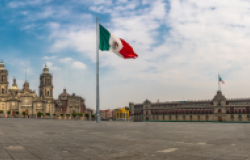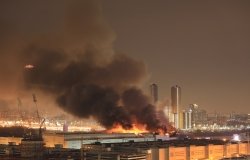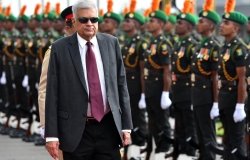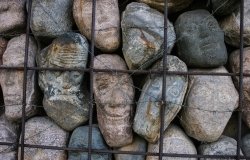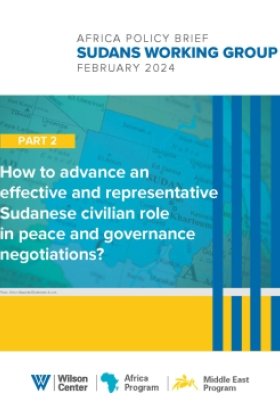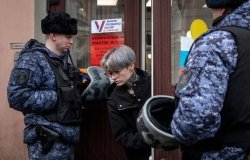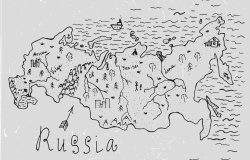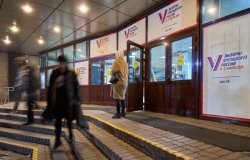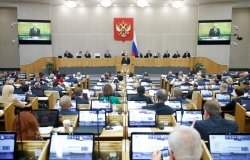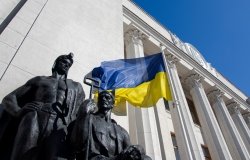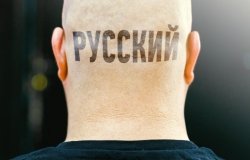Kennan Xplainer: Russia & Venezuela, The Ties that Bind
Despite the ongoing crisis in Venezuela, Nicolás Maduro has managed to maintain his hold on the government. How has his authoritarian regime managed to survive economic collapse, punishing sanctions from the United States, and international pressure for regime change? The answer: Venezuela’s international allies.
In this Kennan Xplainer, Wilson Center multimedia specialist Jude Schroder outlines Venezuela’s relationship with Russia – one of its strongest allies.
Sources and Special Thanks:
This video is based off of the work of former George F. Kennan Fellow Vladimir Rouvinski.
To learn more about the international allies of Nicolás Maduro’s authoritarian government, check out Venezuela’s Authoritarian Allies: The Ties That Bind?, a new book published by the Wilson Center’s Latin American Program.
Bibliography:
- Arnson, Cynthia J. Venezuela’s Authoritarian Allies: The Ties that Bind?, 4-21. Washington, D.C.: Woodrow Wilson International Center for Scholars, 2021.
- Lowenthal, Abraham, and David Smilde. “Venezuela: Is There a Way out of Its Tragic Impasse?” Latin America Program, The Wilson Center. July 9, 2019.
- Rouvinski, Vladimir. “Venezuela: Russia’s Gordian Knot in Latin America.” In Venezuela’s Authoritarian Allies: The Ties that Bind?, edited by Cynthia J. Arnson, 22-57. Washington, D.C.: Woodrow Wilson International Center for Scholars, 2021.
- Specia, Megan. “What Is Happening in Venezuela and Why It Matters.” New York Times (Online), New York: New York Times Company. Apr 30, 2019.
- Universidad Católica Andrés Bello, Encuesta Nacional de Condiciones de Vida (ENCOVI) 2019–2020,” July 2020.
Image Credits (in order of appearance):
- “Juan Guaidó 2019 portrait,” Equipo del diputado de la Asamblea Nacional, Leo Alvarez, CC BY-SA 4.0.
- “Nicolás Maduro (2019-10-25) 01,” Presidential Press and Information Office, www.kremlin.ru, CC BY 4.0.
- “Vladimir Putin with Hugo Chavez 26 November 2004-4,” Presidential Press and Information Office, www.kremlin.ru, CC BY 4.0.
- “Vladimir Putin with Hugo Chavez 26 November 2004-3,” Presidential Press and Information Office, www.kremlin.ru, CC BY 4.0.
- “Russian anthem at Victory Day Parade 2010,” Presidential Press and Information Office, www.kremlin.ru, CC BY 4.0.
- “Vladimir Putin 14 May 2001-3,” Presidential Press and Information Office, www.kremlin.ru, CC BY 4.0.
- “Vladimir Putin 14 May 2001-5,” Presidential Press and Information Office, www.kremlin.ru, CC BY 4.0.
- “Vladimir Putin rally in Sevastopol 2018-03-14 (08),” Presidential Press and Information Office, www.kremlin.ru, CC BY 4.0.
- “Vladimir Putin in Venezuela April 2010-46,” premier.gov.ru, CC BY 4.0.
- “Caracas city, Venezuela capital CC BY-SA 4.0,” Wilfredo Rodríguez, CC BY-SA 4.0.
- “Caracas Sunset,” Sonia, Flickr.com, CC BY-SA 2.0.
- “GDP, current prices (Billions of U.S. dollars),” IMF DataMapper, October 2021.
- “Nicolás Maduro 2019 Inauguration” Presidencia El Salvador, CC0 1.0.
- “Juan Guaidó 2019 portrait,” Equipo del diputado de la Asamblea Nacional, Leo Alvarez, CC BY-SA 4.0.
- “Vladimir Putin and Nicolás Maduro (2019-10-25) 04,” Presidential Press and Information Office, www.kremlin.ru, CC BY 4.0.
- “Dzerzhinsky troops of the National Guard at the dress rehearsal of the parade on Red Square in honor of the Victory Day.” Free Wind 2014/Shutterstock.com.
- “Press briefing by Ambassador Vasily Nebenzia,” lev radin/Shutterstock.com.
- “Rosneft oil company logo on the building in Moscow,” Kapustin Igor/Shutterstock.com.
- “Eulogio Antonio Del Pino Diaz, People's Minister for Petroleum and Mines of the Republic of Venezuela, 2016 St. Petersburg International Economic Forum,” ID1974/Shutterstock.com, Igor Dolgov, Moscow.
- “Caracas, Venezuela; 04 30 2019: Military and civil uprising against Nicolás Maduro,” Andres G/Shutterstock.com.
- “S-125 Pechora-2M VEN,” Xavier Granja Cedeño, Cancilleria Ecuador, CC BY-SA 2.0.
- “Two young Caucasian men work as loaders at an old factory,” fotoliza/Shutterstock.com.
- “Respirators before packing in boxes,” BigGarry/Shutterstock.com.
- “Gam-COVID-Vac 01,” Ministry of Defence of the Russian Federation, www.mil.ru, CC BY 4.0.
- “Vladimir Putin & Nicolás Maduro in Tehran, 24 November 2015” Presidential Press and Information Office, www.kremlin.ru, CC BY 4.0.
Hosted By

Kennan Institute
The Kennan Institute is the premier US center for advanced research on Russia and Eurasia and the oldest and largest regional program at the Woodrow Wilson International Center for Scholars. The Kennan Institute is committed to improving American understanding of Russia, Ukraine, Central Asia, the Caucasus, and the surrounding region though research and exchange. Read more

Latin America Program
The Wilson Center’s prestigious Latin America Program provides non-partisan expertise to a broad community of decision makers in the United States and Latin America on critical policy issues facing the Hemisphere. The Program provides insightful and actionable research for policymakers, private sector leaders, journalists, and public intellectuals in the United States and Latin America. To bridge the gap between scholarship and policy action, it fosters new inquiry, sponsors high-level public and private meetings among multiple stakeholders, and explores policy options to improve outcomes for citizens throughout the Americas. Drawing on the Wilson Center’s strength as the nation’s key non-partisan policy forum, the Program serves as a trusted source of analysis and a vital point of contact between the worlds of scholarship and action. Read more


